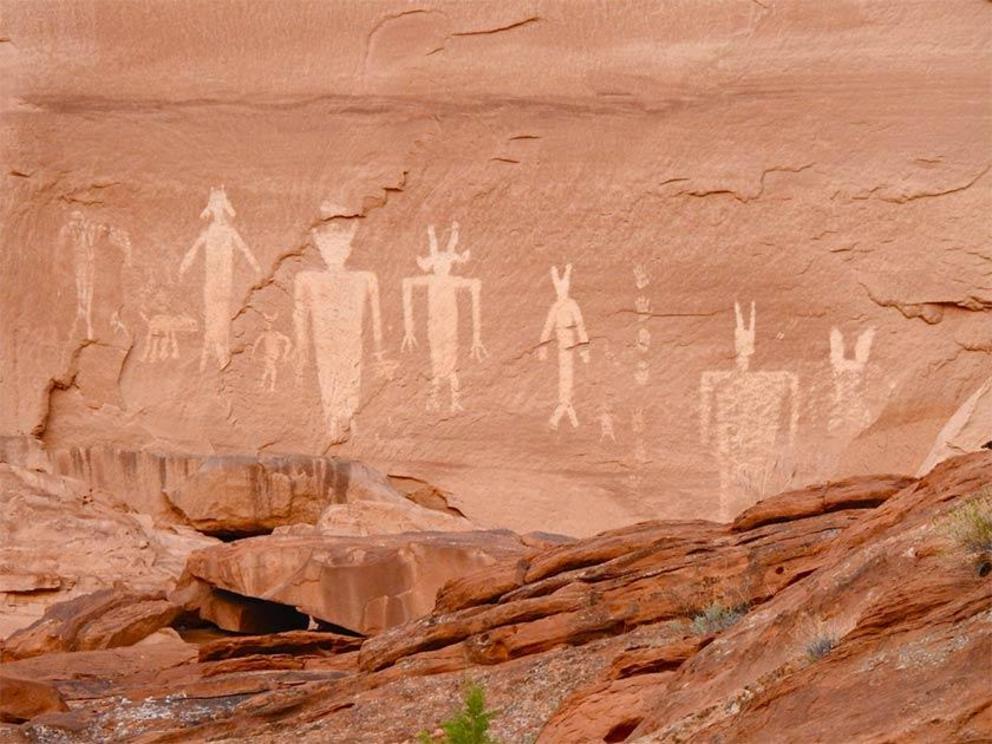The Anasazi and Anakim: Nephilim ruins and evidence of ritual murder
Top image: A petroglyph showing the mysterious Anasazi people, who share numerous similarities with the Anakim giants of the prehistoric Middle East.
Across the ancient world, from the rocky deserts of the American West all the way to the shores of the Mediterranean, enigmatic parallels between ancient myths and archaeological sites are emerging. One such parallel exists between the Anasazi people of North America and the Anakim of the ancient Near East, the land of Canaan. Deciphering this conundrum is a difficult challenge when viewed through the opaque lenses of biases, cultural taboos, and overlapping civilizations, all buried under the sands of time and blanketed underneath a fog of mystery.
Who were the Anasazi? The term Anasazi is a xenonym used primarily by the Navajo people, which has been variously translated as “ancient ones” or “ancient enemies” or “ancient ancestral enemies.” This refers to a genetic and culturally unique group who were hostile towards the ancestors of modern tribes, and who dominated the American Southwest in ancient times before other tribes displaced them.
Different Native American tribes like the Paiute and Hopi make references to this same group in their traditions. The daughter of Paiute Chief Winnemucca, Sarah Winnemucca Hopkins wrote about who her people called the Si-Te-Cah in her book Life Among the Paiutes: Their Wrongs and Claims . The Paiute oral tradition holds that the Si-Te-Cah, were a race of red-haired, cannibalistic giants who the Paiutes exterminated long ago.
Who were the Anakim? According to scholars, when the Hebrews completed their forty years of wandering through the Sinai desert they finally arrived in the promised land of Canaan, which was already occupied by a race of fearsome giants, whom we now call the Anakim. The Book of Numbers (13:32-33) recounts a story of twelve spies sent on a reconnaissance mission into the Anakim area. “And there we saw the Nephilim, the sons of Anak, who come of the Nephilim; and we were in our sight as grasshoppers, and so we were in their sight.”
This term, Nephilim, is one of the most disputed words in the history of biblical scholarship. They are also known as the Anakim, however, the etymologies are all relatively flimsy. But the wealth of context clues makes it quite clear that this was a race of giant warriors who preceded the arrival of the Hebrews into Canaan, very similar to the Native American Anasazi tribal stories.
Ancient Historical Sources About the Nephilim Or Anakim
In the early Greek interpretations the word Nephilim was translated as “giants.” Other, later translations include “fallen ones,” and “appointed ones or overseers,” and “bound ones, or prisoners.” The first mention of the Nephalim in the Torah calls them “heroes of old and the warriors of renown.”
Apocryphal texts such as the Book of Enoch provide additional clues about the Nephilim / Anakim people, but these texts are generally regarded by academics as lacking validity because they were omitted from the official biblical cannon. However, the term apocrypha comes from the Greek roots apo (away) and krytein (to hide or conceal). This would suggest that these books were not omitted due to a lack of validity, but, rather, were deliberately hidden for some other reason, perhaps political or theological. Some things, it seems, never change.
The Book of Enoch, Section I, Chapters 6-7 refers to the Nephilim like this:
“And they [ homo sapien women] became pregnant, and they bare great giants: Who consumed all acquisitions of men. And when men could no longer sustain them, the giants turned against them and devoured mankind. And they began to sin against birds, and beasts, and reptiles, and fish, and to devour one another’s flesh, and drink the blood. Then the earth laid accusation against the lawless ones.”
The academic position on these Nephilim / Anakim accounts is that the fundamental, literal interpretation of them is deeply flawed, and rightfully so. Mythology cannot be automatically accepted at face value. However, therein lies a contradiction because the mainstream academics automatically reject any historical value in these accounts, which is equally flawed reasoning, nothing more than fundamental figurative interpretation. This gives rise to a discerning question: is there archaeological/anthropological evidence to support these myths about the Nephilim / Anakim?
 Anasazi cliff dwellings in Mesa Verde National Park, USA.
Anasazi cliff dwellings in Mesa Verde National Park, USA.
The Archaeology And Anthropology Of The Anasazi
Early American archaeology is filled with reports of human remains that exhibited unique physical traits and theories of a vanished ethnic group. However, this narrative was rejected by the academic authorities of the time, including the Smithsonian and the National Geographical Society, even though it was their own experts advancing such theories. Colorado, New Mexico, Arizona, and Utah are littered with strange ruins and petroglyphs that are vaguely attributed to tribes that preceded modern Native Americans.
In a National Geographic article from 2016, Aaron Sidder explored the odd reality that the ruling elite of Chaco Culture had six fingers and toes, hence the title of the article “Extra Fingers and Toes Were Revered in Ancient Culture.” The article states that anthropologist Patricia Crown from the University of New Mexico was originally fascinated by the “divine powers attributed to polydactyls among the Maya.” Polydactyls are humans with extra fingers or toes. Crown goes on to summarize her team’s findings at Chaco Canyon, “We found that people with six toes especially, were common and seemed to be associated with important ritual structures and high-status objects like turquoise.”
Six fingered hand and six toed footprints impressed upon the plaster walls of ancient structures have also been discovered. However, it is important to note that these structures themselves are not fully understood. It is known that there were dwellings and ritual structures, but why exactly these subterranean ritual spaces (known as kivas) were dug into the ground and why so many were fashioned in a honeycomb design is unknown.
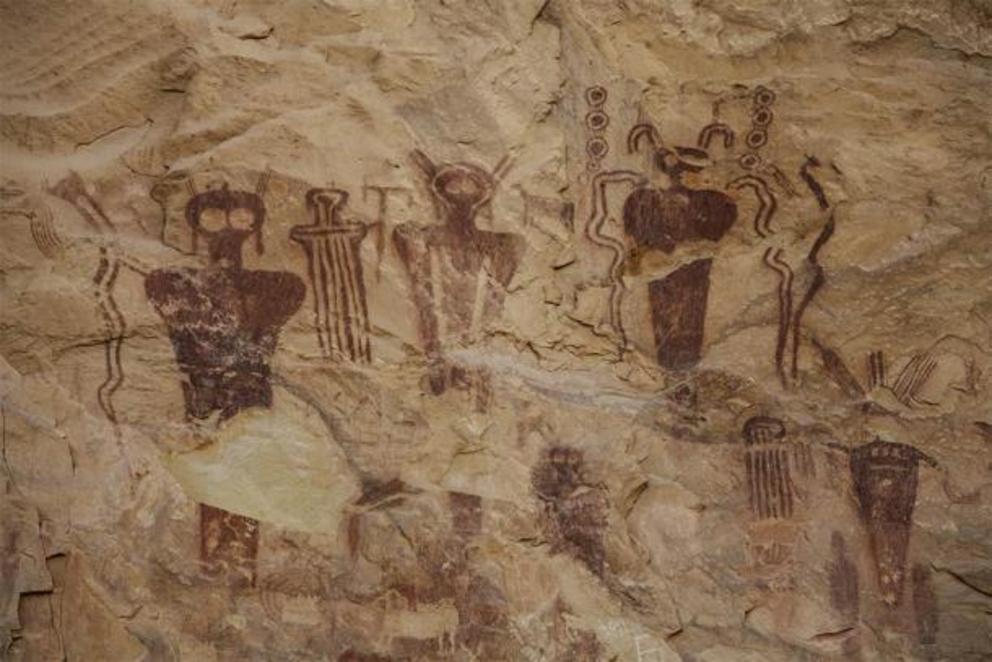 Anasazi pictograph panel in Sego Canyon, Utah, showing strange beings.
Anasazi pictograph panel in Sego Canyon, Utah, showing strange beings.
The location of the structures also raises questions. It’s clear that there were certain geographic, geometric, and astronomical alignments taken into account by the ancient builders of these structures. But these areas are generally poor locations for accessing natural resources.
It is also worth noting that when Europeans first encountered the Native American tribes in question, the materials they commonly used were bone, wood, and animal skins. The kiva structures were already abandoned, and these later tribes lived nomadically. In other words, there seems to be a significant disconnect between the culture of stone masons, settled in one area, and the nomadic tribes. Many of the Anasazi structures also show signs of possible destruction by warfare as their walls are discolored by fire.
Archaeological Evidence of Anasazi Cannibalism/Ritual Murder
In January of 2000, scholars Billman, Lambert, and Banks published an article in the Cambridge University Press regarding Mesa Verde , which is another Anasazi site in southwestern Colorado. This article reports their team’s discovery of cannibalism at the site. “Cut marks and percussion scars implicate humans in the disarticulation and reduction of these bodies. Evidence of heat exposure on some bone fragments and laboratory analyses of human coprolite recovered from one of the pit houses support the interpretation that people prepared and consumed human body parts.”
 The Anasazi White House Ruins in Canyon de Chelly National Monument, Arizona.
The Anasazi White House Ruins in Canyon de Chelly National Monument, Arizona.
Another Anasazi site within Arizona’s Canyon de Chelly contains gruesome discoveries which led researchers to some odd speculations. As stated in a Gutenberg project report: “Among the discoveries no bones of animals have been found, no skins, no clothing, no bedding. Many of the rooms are bare but for water vessels. One room, about 40 by 700 feet, was probably the main dining hall, for cooking utensils are found here. What these people lived on is a problem, though it is presumed that they came south in the winter and farmed in the valleys, going back north in the summer. One theory is that the present Indian tribes found in Arizona are descendants of the serfs or slaves of the people which inhabited the cave. Undoubtedly, a good many thousands of years before the Christian era, a people lived here which reached a high stage of civilization. The remains of 14 infants were found in a slab-lined cist used earlier as a storage bin. Below the infants were the bodies of four other children packed in an enormous basket.”
In Utah’s Dry Fork Canyon, petroglyphs adorn primordial stone walls, and these glyphs tell ancient stories of violence. At the Fermont petroglyphs for instance, a figure interestingly known as “big foot man” (due to his disproportionate foot size) is depicted with a cone-shaped head, six fingers, who seems to be proudly displaying decapitated victims. Another glyph at McConkie Ranch shows a horned figure brandishing a bloody weapon illustrated through the use of a red pigment.
Skeletons in the Closet?
In 1911, at Lovelock Cave in Nevada, guano miners discovered a trove of ancient bones and artifacts. Then from 1912 to 1965 a series of haphazard and suspicious excavations occurred at the site during which tens-of-thousands of objects, including duck decoys, moccasins, weapons, and strange human remains, were recovered. The controversy and scientific misconduct travesty regarding these remains goes beyond the scope of a single article, but suffice it to say that large human remains were discovered and were, at one point, stored not displayed, at the Humboldt Museum in Winnemucca Nevada. These artifacts have been examined and photographed many times. However, currently, authorities claim the remains have been repatriated back to the Native Americans out of respect for their ancient ways.
It’s important to point out that without genetic testing it’s impossible to determine with certainty exactly which tribe these remains belong to, and there has been no published laboratory analysis of these remains. Furthermore, the artifacts in the museum are mostly replicas while the vast majority of the more than ten-thousand objects are in the possession of the Smithsonian and are not on display.
But just looking at the fragments of information available some disturbing conclusions can be drawn. For instance, in the photographs it is evident that some of the skulls had teeth that were apparently filed to a sharp point, which is a customary practice also found amongst certain Polynesian tribes who practiced cannibalism. Also, within the fine print of these reports are measurements of at least one skeleton. It was 6.5 feet (2 meters) tall and the mandibles, bone density, and ocular cavities suggest that these were very large, very muscular people with abnormal eyes.
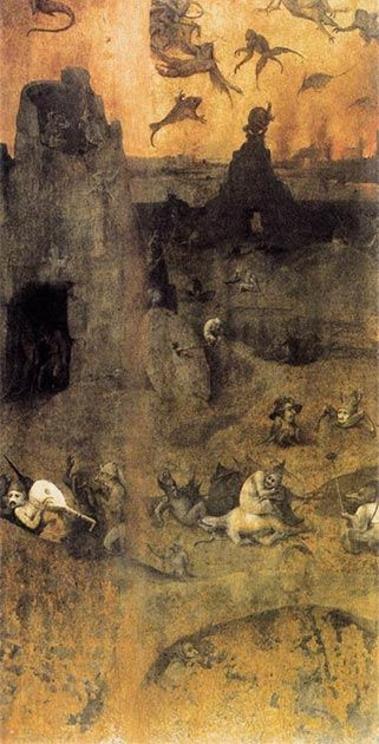 This famous painting by Hieronymus Bosch shows fallen angels that are said to be a reference to the Nephalim / Anakim giants that preceded the Canaanites in the Levant.
This famous painting by Hieronymus Bosch shows fallen angels that are said to be a reference to the Nephalim / Anakim giants that preceded the Canaanites in the Levant.
The Archaeology And Anthropology Of The Anakim
Before delving into the texts, artifacts, and remains regarding the people who preceded the ancient Canaanites (the Anakim), it’s important to touch on the fact that cultures like the Philistines, Canaanites, and Phoenicians are not well understood. The boundaries of their civilization, their genetics, and cultural assimilation patterns are an extremely complex web that is still mostly a mystery.
But there is strong evidence for the notion that the Carthaginians, Philistines, and Phoenicians were all offshoot branches of the same original civilization: the Canaanites. It is not disputed that the Phoenician homeland was in the Levant. The ancient Egyptian accounts suggest the people from Carthage referred to themselves as Kenaani or Kinaani which equates to Canaanite.
Another complication is that the modern nations beneath which the Canaanite civilizations are buried make archaeological digs challenging. Many of the areas have been mired in perpetual conflict, their borders are disputed, and there are constant geopolitical hostilities, all of which make painstaking excavation nearly impossible.
 The Gath archaeological site in Israel where the Goliath fragment was found. This fragment is strongly connected with the Anakim giants.
The Gath archaeological site in Israel where the Goliath fragment was found. This fragment is strongly connected with the Anakim giants.
In 2005, despite these obstacles, Dr. Aren Maeir, professor at BarIlan University in Israel and director of an excavation at the ancient city of Gath, discovered pottery shards with the name Goliath inscribed on them. The biblical combatant Goliath was said to be the greatest warrior of the Philistines. He was said to be 8.0-9.5 feet (2.4-2.9 meters) tall, had six fingers on each hand, six toes on each foot, and he was known as the Goliath of Gath.
The shard is dated to around 950 BC, which is within seventy years of the alleged biblical existence of Goliath. Of course, this shard does not prove the biblical tale. It does however lend a small degree of credence to it. Many other large, polydactyl, barbarians are described in biblical books such as Samuel, Deuteronomy, and Chronicles. The Nephilim-Anakim family tree included additional lineage branches like the Rephaim and Zamzummim. Figures such as Lahmi, the brother of Goliath, who was also slain during the conquest, was said to be very large with six digits on each extremity.
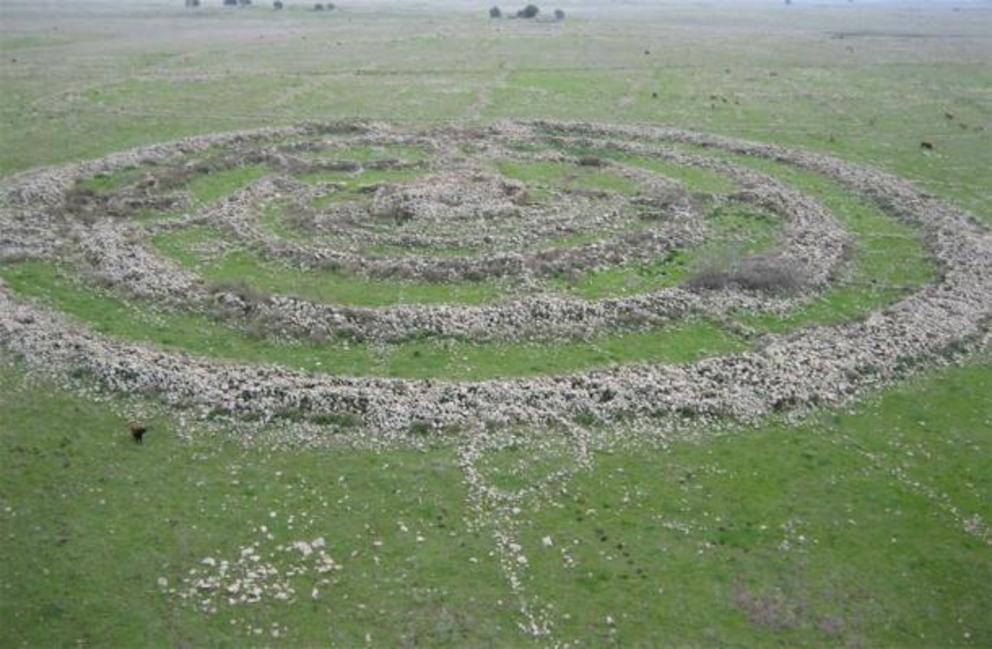 The site in Israel’s Golan Heights that is strongly connected with the legendary Anakim king Og of Bashan.
The site in Israel’s Golan Heights that is strongly connected with the legendary Anakim king Og of Bashan.
King Og of Bashan is perhaps the most interesting of these Anakim figures because his great size and strength are mentioned in correlation with a structure and an area in the region. In the Deuteronomy, it is stated that Og is the last of the Rephaim and that his enormous bedstead, or sarcophagus, was still a site of wonder for many people.
The entire Levant, from Turkey to Egypt, is dotted with field after field of ancient dolmens. In this particular Canaan region, there is a site known as Rujm el-Hiri , which is connected with the Anakim people. This site has many names, but one modern Hebrew name for the site is Gilgal Refaim or “the wheel of the giant.” The central section of this site matches the dimensions stated in Deuteronomy but also shares uncanny similarities to the mysterious structures at Chaco Canyon. Structural resemblance in and of itself would not be noteworthy. But an enigmatic megalith of concentric stone circles that allegedly contains the remains of a very large polydactyl is beyond noteworthy.
Archaeological Evidence Of Canaanite Anakim Ritual Murder
There is a wealth of ancient textual evidence to suggest that the Canaanites (and therefore the Anakim) practiced human sacrifice/infanticide to an extent that exceeds what has been “found” in the Bible or chapters removed from the original Bible.
Greek and Roman authors all recorded accounts that reinforced the idea that sacrifice/infanticide was common with the Anakim. Authors like Plutarch and Herodotus, for example, attest to this in their writings. However, it must be stated that Greece, Rome, and Israel were all competitors of the Canaanites and therefore may not be entirely reliable sources for Anakim accounts.
But in 2014, Dr. Josephine Quinn of Oxford University uncovered definitive evidence of infant sacrifice at a variety of Phoenician/Carthaginian/Canaanite colonies across the Mediterranean declaring “What we are saying now is that the archaeological, literary, and documentary evidence for child sacrifice is overwhelming and that instead of dismissing it out of hand, we should try and understand it.” Her evidence, published in the journal Antiquity, indicates the practice occurred from around 800 BC to 146 BC at a variety of Canaanite colonies in Carthage, Sicily, Sardinia, and Malta. The Malta site is well known for its subterranean sacred spaces and remains exhibiting unique physical traits. But these remain have suspiciously gone missing.
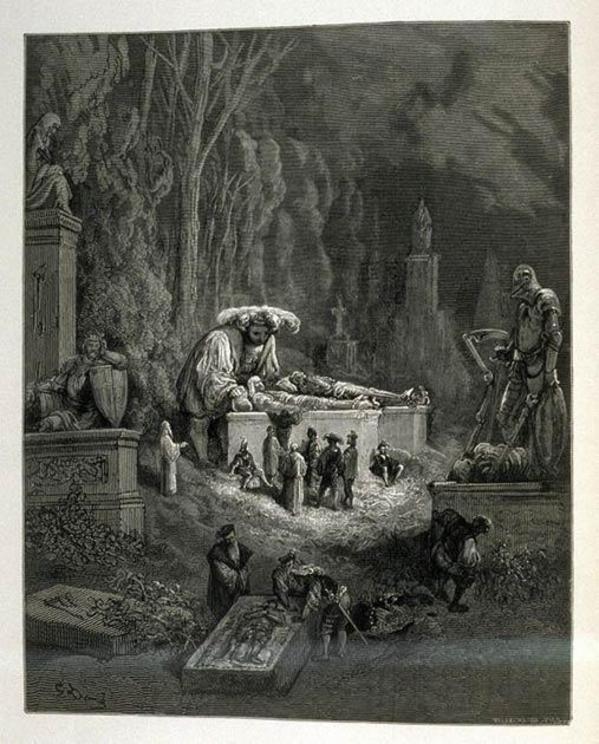 This old drawing shows King Og of Bashan, an Anakim, as giant. Note the other giants in the upper right part of the drawing.
This old drawing shows King Og of Bashan, an Anakim, as giant. Note the other giants in the upper right part of the drawing.
From Fact To Fiction And Back Again
While legends cannot be blindly accepted at face value, empirical evidence indicates the presence in the ancient past of genetically unique humans who practiced ritualistic murder, mutilation, and cannibalism.
They were large, red-haired polydactyls, master masons, astronomers, and seafarers. They were renowned for their bloodlust and combat capability.
It cannot be stated as fact that the Anasazi originated in Canaan, home of the Anakim, but it can be stated that such stark cultural and genetic parallels cannot be mere coincidence.

